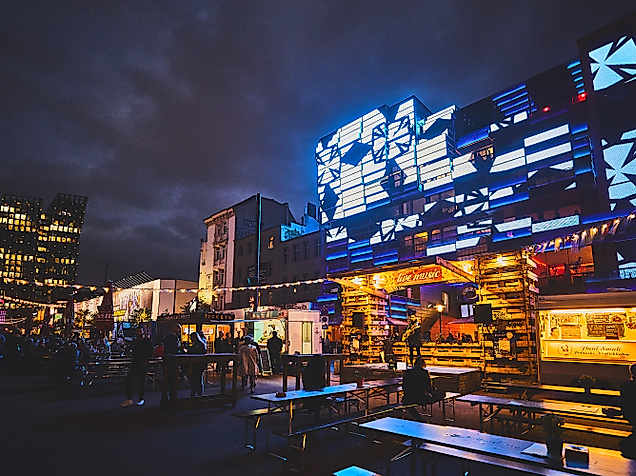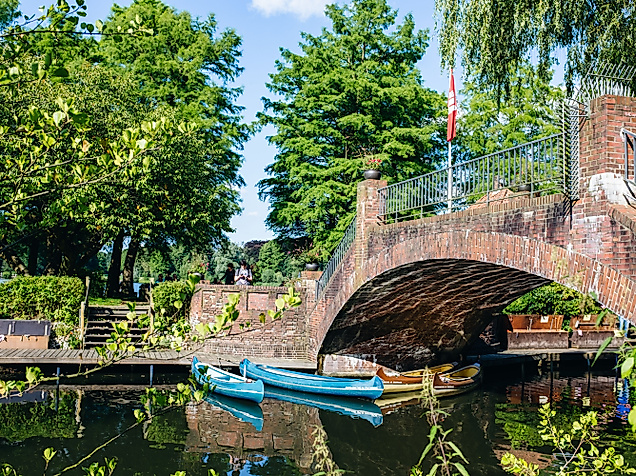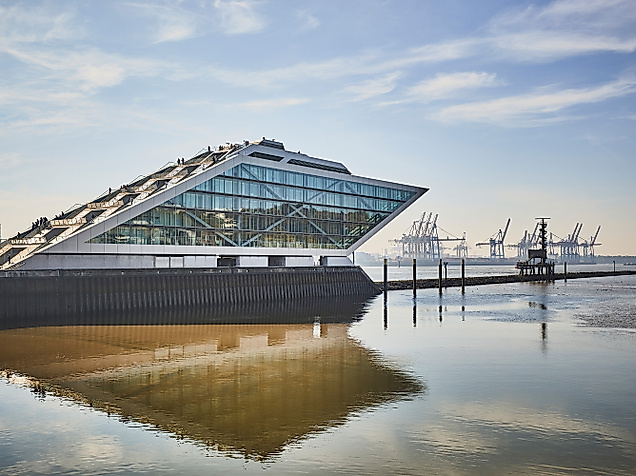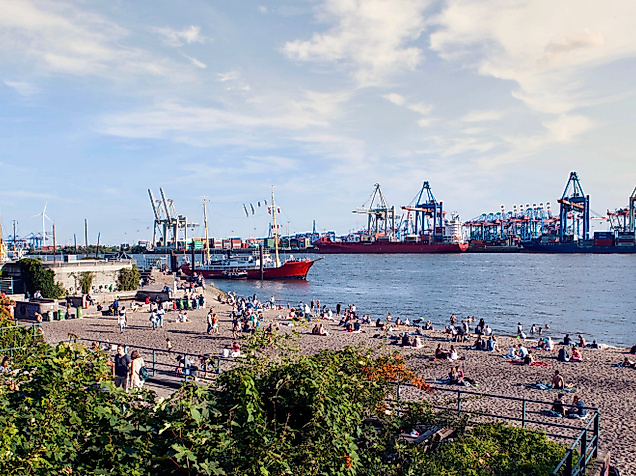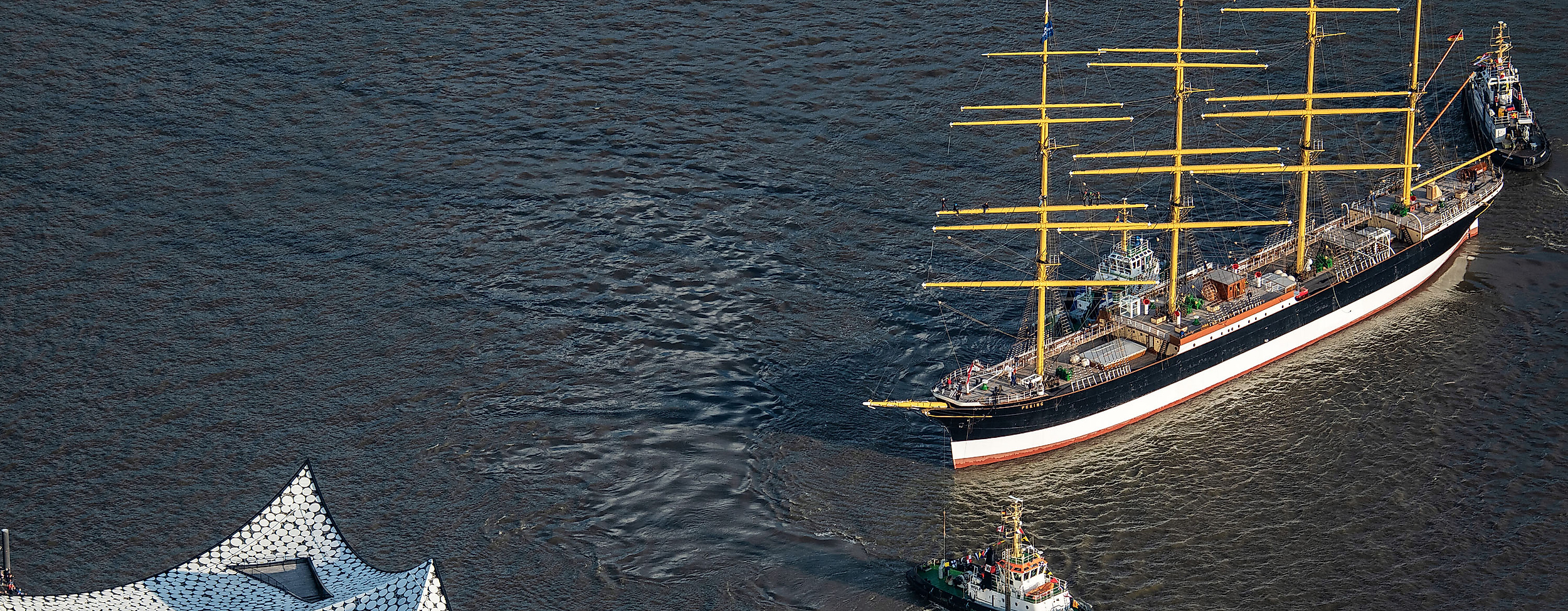

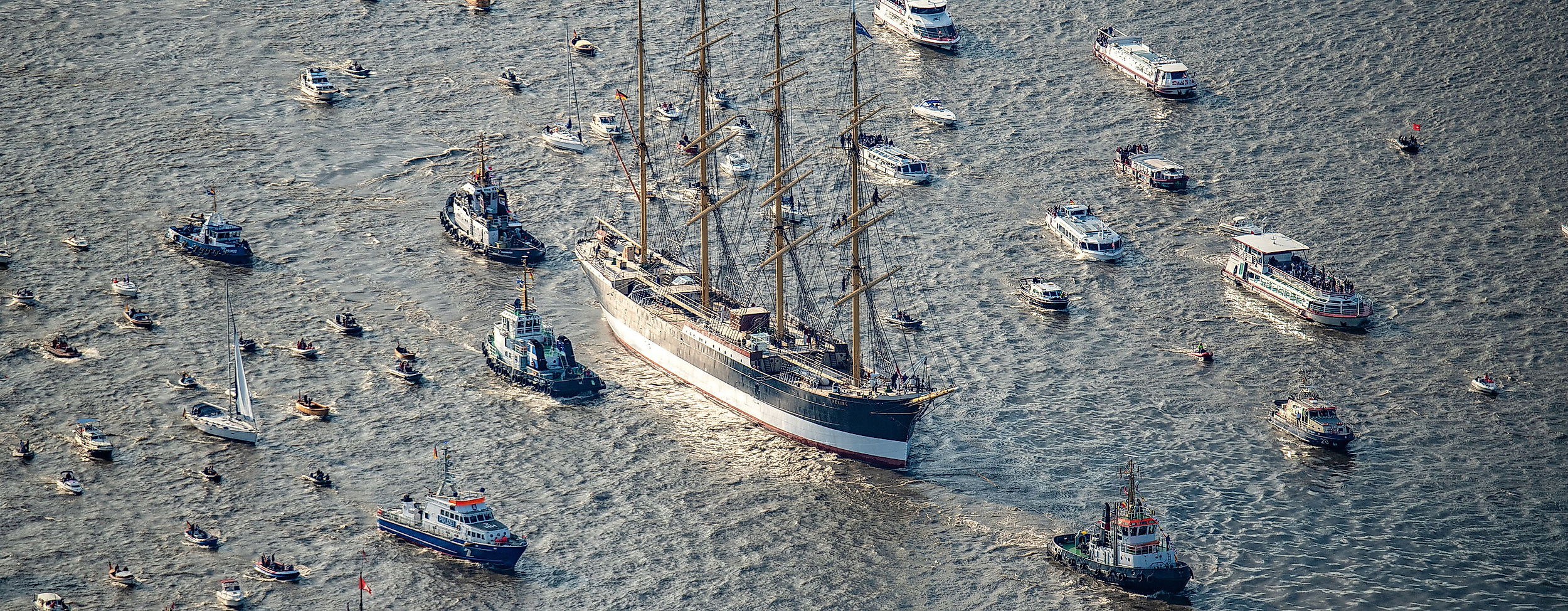
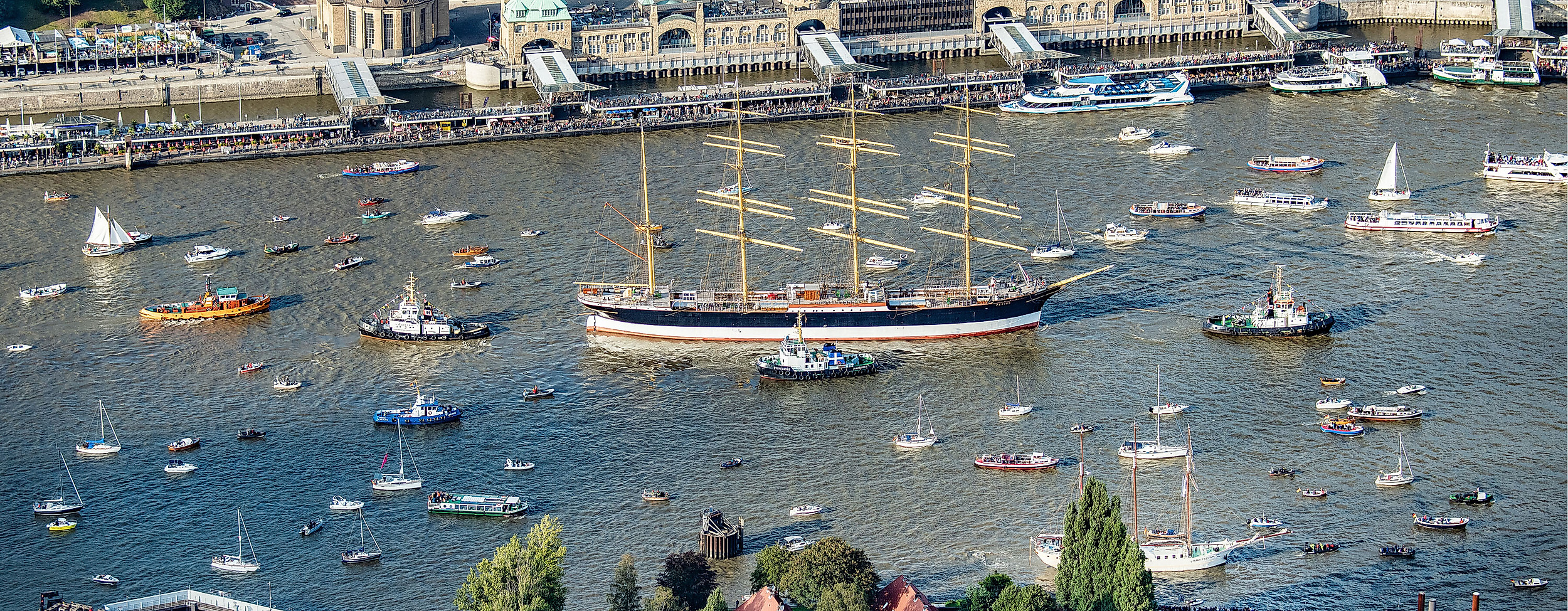
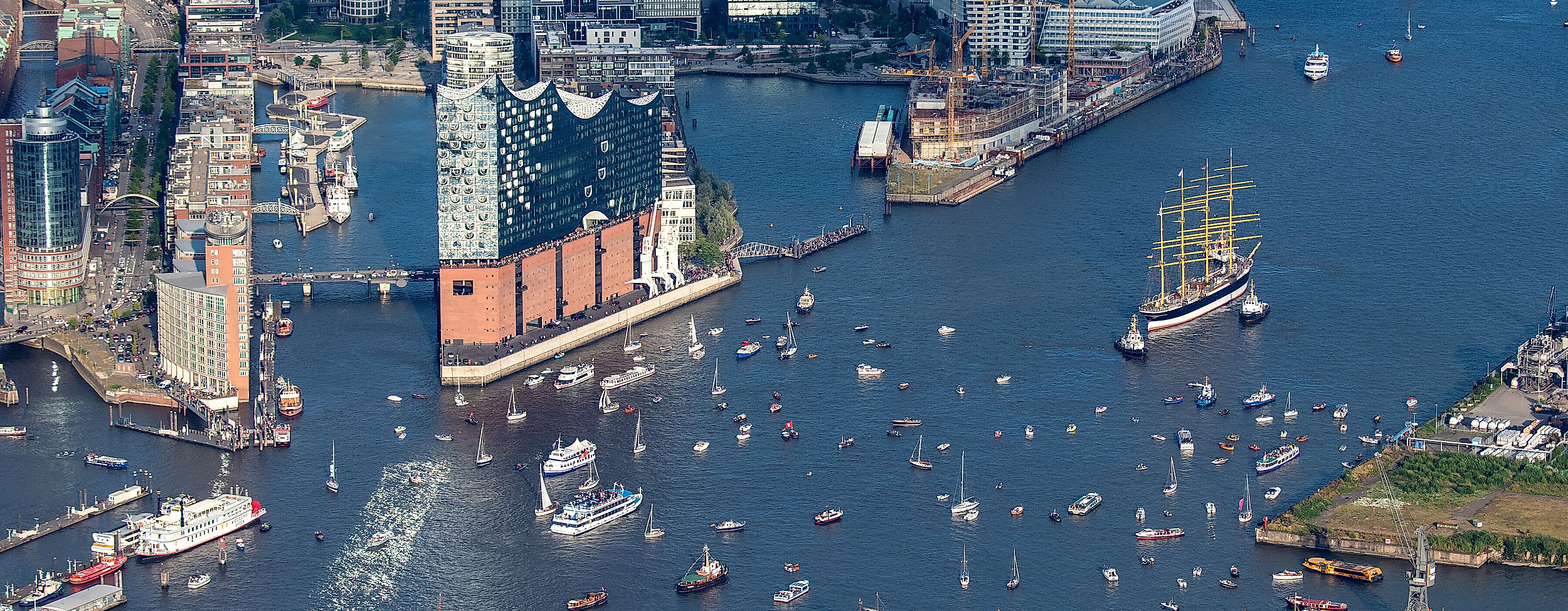
Peking
Experience the history of seafaring
Back to her home port: After decades of absence, the four-masted barque Peking returns to Hamburg. In the port on the Elbe, the Peking is the fourth large museum ship alongside the Rickmer Rickmers, Cap San Diego and MS Bleichen.
The former freight sailing vessel Peking looks back on an eventful past. The identical sister ship Passat has found a berth in Travemünde only a few kilometres away.
History of Peking
The four-masted barque Peking was completed in 1911 at Blohm + Voss for the F. Laeisz shipping company. The sailing ship is part of the well-known Flying P-Liner fleet of the traditional Hamburg shipping company. Her maiden voyage took the Peking to South America. As a freighter she sailed to Chile for many years. On her round trips the Pekings sailed around Cape Horn a total of 34 times. The passage by ship is one of the most dangerous in the world.
From freighter to museum ship
In 1932, the Peking ended her service as a freighter and was converted into a stationary training ship on the east coast of England. On the occasion of the 200th anniversary of American independence, the traditional sailing vessel was brought to New York, where the Peking took up her prominent berth in Manhattan. In 2015 it was finally decided to bring the Peking back to her home port of Hamburg.
Back to Hamburg
The Peters-Werft shipyard in Wewelsfleth took over the restoration of the ailing Peking. The new home of the no longer navigable but accessible museum ship is to be the emerging Grasbrook district of Hamburg. It is planned that the new German Port Museum, which Peking will call its flagship, will be built there by the middle of the 2020s.
The film "Four-masted barque PEKING - Insights into the restoration work" is available on the YouTube channel of the Hamburg Maritime Foundation: https://youtu.be/NZORlkvr35w (in German).
Top customer reviews
Search
Languages
Google translator for other languages
Please note that this is an automatic translation.
For better information, you can always switch to the German or English version




